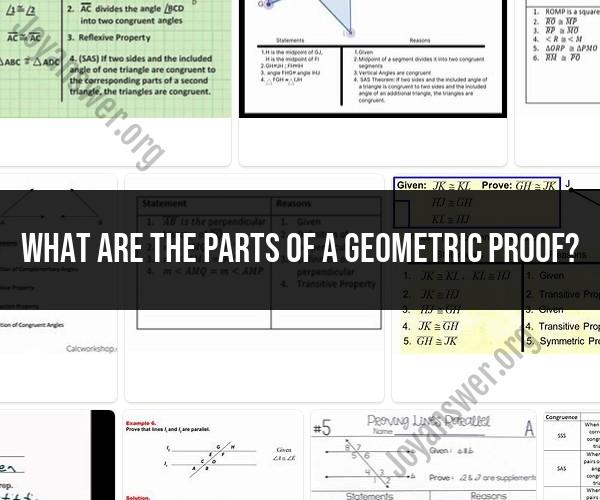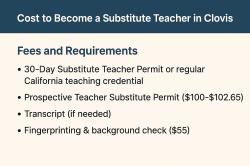What are the parts of a geometric proof?
Geometric proofs are fundamental to geometry, providing logical explanations for various mathematical statements. This guide breaks down the essential elements of geometric proofs to help you understand their structure and purpose.
Introduction to Geometric Proofs
A geometric proof is a logical argument that establishes the truth of a mathematical statement using deductive reasoning. It consists of several key components:
1. Statements
Statements are the mathematical assertions that you aim to prove. Each statement is assigned a unique label or number for reference.
2. Given Information
The given information provides the initial facts and conditions you start with in the proof. It serves as the foundation for your logical argument.
3. Definitions and Axioms
Definitions are precise explanations of geometric terms, while axioms are self-evident truths that serve as the basis for reasoning. Both definitions and axioms help you establish logical connections between statements.
4. Logical Reasoning
Logical reasoning involves using established facts, definitions, and axioms to draw valid conclusions. You'll apply logical principles such as the transitive property, the law of syllogism, and the law of detachment.
5. Steps of the Proof
The proof is constructed as a sequence of steps, with each step building upon the previous ones. Each step is justified using logical reasoning and the information provided.
6. Conclusion
The conclusion restates the statement you aimed to prove and summarizes the logical chain of reasoning that led to its establishment.
Structuring a Geometric Proof
Geometric proofs typically follow a structured format:
1. Given
State the given information, including any diagrams or conditions provided.
2. Prove
Clearly state the statement you aim to prove.
3. Proof
Present a logical sequence of steps, each justified by established facts, definitions, or axioms. Use proper notation and symbols to denote relationships between geometric elements.
4. Conclusion
Summarize the proof by restating the statement you've proven and highlighting the logical path you followed.
Common Proof Techniques
There are various techniques used in geometric proofs, including:
- Direct Proof: Demonstrating a statement by directly applying definitions and axioms.
- Indirect Proof (Proof by Contradiction): Assuming the opposite of what you want to prove and showing that it leads to a contradiction.
- Proof by Contrapositive: Proving the contrapositive of a statement to establish the original statement.
Conclusion
Understanding the elements of geometric proofs and the techniques used to construct them is essential for building strong mathematical reasoning skills. By deconstructing proofs and following logical steps, you can confidently navigate geometric concepts and advance your mathematical abilities.













